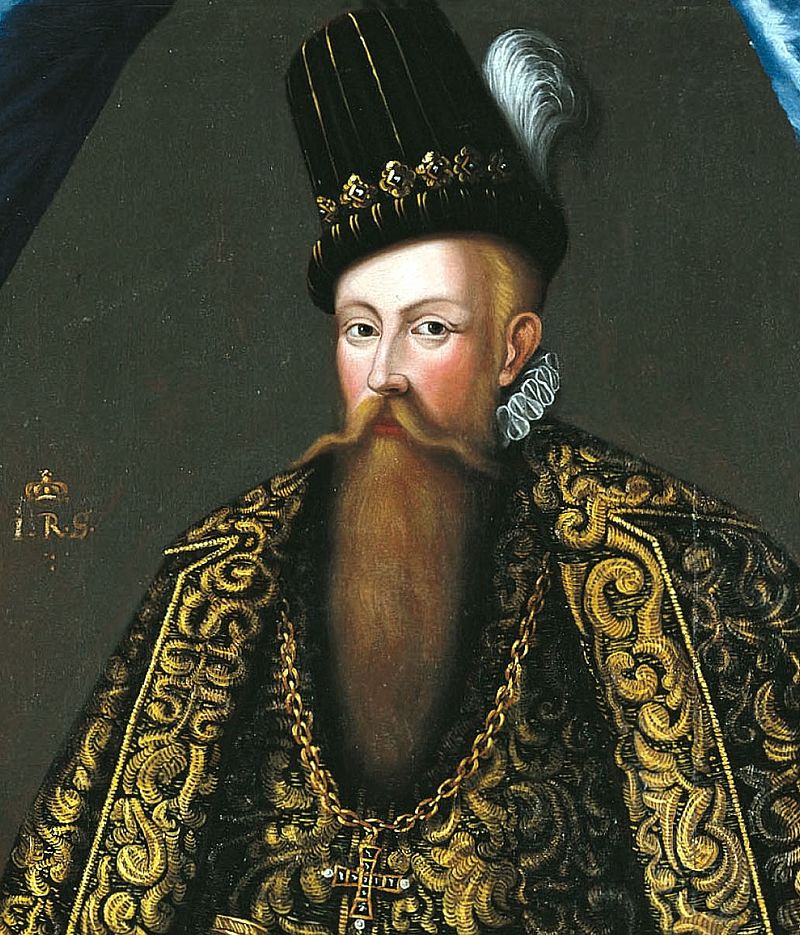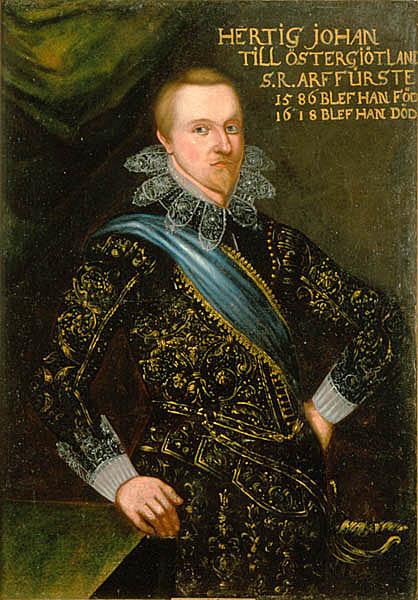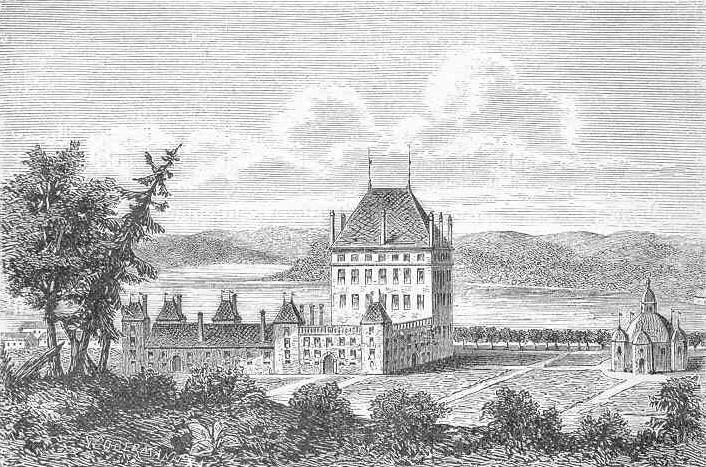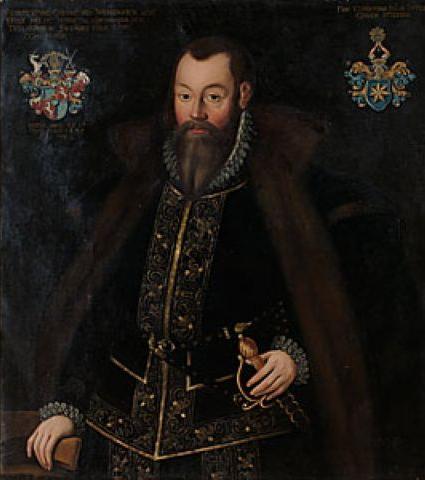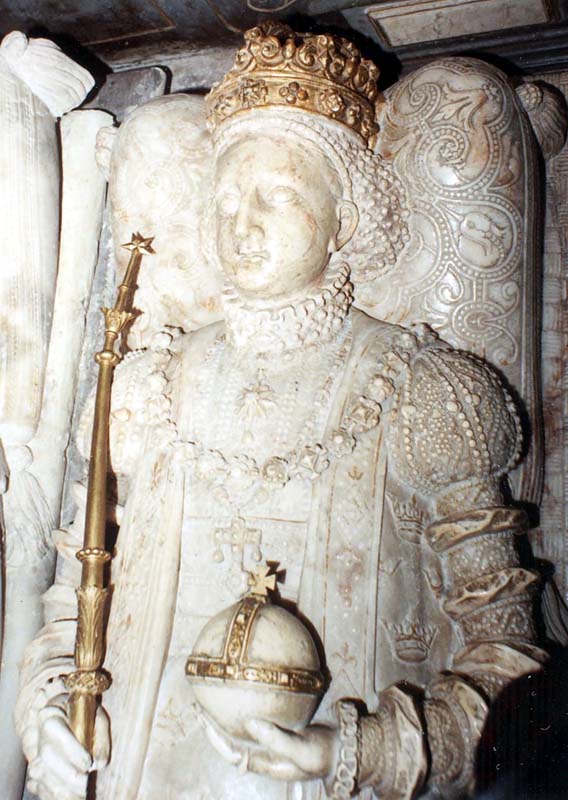by Susan Flantzer
© Unofficial Royalty 2021

Credit – Wikipedia
Sigmund III Vasa was King of Poland and Grand Duke of Lithuania from 1587 until his death in 1632 and King of Sweden and Grand Duke of Finland from his father’s death in 1592 until he was deposed by his uncle in 1599. He was born on June 20, 1566, at Gripsholm Castle in Mariefred, Södermanland, Sweden, where his parents were being held in captivity because of a failed rebellion against Johan’s mentally ill half-brother Erik XIV, King of Sweden. Sigismund was the second of the three children and only son of Johan, Grand Duke of Finland, the future Johan III, King of Sweden, and his first wife Katarina Jagellonica of Poland. Sigismund’s mother was the daughter of Sigismund I, King of Poland and Grand Duke of Lithuania (1467 – 1548) and his second wife Bona Sforza of Milan (1494 – 1557). After the death of her father in 1548, Katarina’s brother Sigismund II Augustus succeeded as King of Poland and Grand Duke of Lithuania.

Johan III of Sweden, his wife Katarina Jagiellon and young Sigismund imprisoned at Gripsholm Castle; Credit – Wikipedia
Sigismund III Vasa had two sisters:
- Isabella Vasa of Sweden (1564 – 1566), died in early childhood
- Anna Vasa of Sweden (1568 – 1625), unmarried
Due to King Erik XIV’s mental health issues, his participation in the 1567 Sture Murders, and his unpopular marriage to his mistress Karin Månsdotter, his younger half-brothers led a revolt against him with the support of many nobles that ended in Erik XIV’s removal as King of Sweden in September 1568 and his eldest half-brother succeeding to the throne as Johan III, King of Sweden. Sigismund was now the Crown Prince of Sweden.
While his father was Lutheran, Sigismund’s mother was Roman Catholic and he was raised Catholic in the hopes that he would become King of Poland. Sigismund was made aware of his connection to the Jagiellonian dynasty which ruled Poland since 1386. He was tutored in both Polish and Swedish and was also proficient in German, Italian, and Latin. In the spring of 1583, Sigismund’s mother Katarina became seriously ill with gout, and after much suffering, she died on September 16, 1583, aged 56. After Katarina’s death, Johan III married again to Gunilla Bielke.
Sigismund had one half-brother from his father’s second marriage to Gunilla Bielke:
- Johan of Sweden, Duke of Finland, Duke of Östergötland (1589 – 1618), married his first cousin Princess Maria Elisabet of Sweden, no children
After the death of Stephen Báthory, King of Poland, Grand Duke of Lithuania, who had no legitimate children, 21-year-old Sigismund was elected King of Poland and Grand Duke of Lithuania in 1587. He was crowned on December 27, 1587, at Wawel Cathedral in Kraków, Poland.

Anna of Austria, Sigismund’s first wife; Credit – Wikipedia
On May 31, 1592, at Wawel Cathedral in Kraków, Poland, Sigismund married his first wife Anna of Austria, daughter of Archduke Karl II of Austria and Maria Anna of Bavaria. On the same day, Anna was crowned Queen of Poland.
Sigismund and Anna had five children but only one, Ladislaus Vasa, who succeeded his father as King of Poland and Grand Duke of Lithuania, survived childhood. Similarly, Ladislaus Vasa had five children from his two marriages but none of them survived childhood.
- Anna Marie (1593 – 1600), died in childhood
- Katarina (born and died 1594), died in infancy
- Ladislaus Vasa IV, King of Poland, Grand Duke of Lithuania (1595 – 1648), married (1) Cecilia Renata of Austria, had three children, none survived childhood, Cecilia Renata died due to childbirth complications (2) Marie Louise Gonzaga, had two children, neither survived infancy
- Katarina (1596 – 1597), died in infancy
- Christopher (born and died 1598), died shortly after birth
On November 17, 1592, Sigismund’s father Johan III, King of Sweden, Grand Duke of Lithuania died and Sigismund was granted permission by the Polish legislature to claim his inheritance as the rightful King of Sweden. The Catholic Sigismund promised to recognize Lutheranism as Sweden’s state religion and was crowned at Uppsala Cathedral in Uppsala, Sweden on February 19, 1594. However, many were suspicious of Sigismund’s promise to uphold Lutheranism when a papal nuncio was in the coronation procession.

Sigismund’s uncle Karl who deposed him and then reigned as Karl IX, King of Sweden; Credit – Wikipedia
When Sigismund returned to Poland in July 1594, Sigismund’s uncle Karl, Duke of Södermanland and the council were to govern in his absence. Because of the religious differences, Sigismund did not want to give us uncle and the council full government power. He appointed some council members who favored the Roman Catholic Church who would receive orders directly from him. In 1595, the Riksdag (legislature) gained control of the Swedish government and appointed Karl regent. In the midst of this long conflict, Sigismund’s first wife Anna died, aged 24, on February 10, 1598, due to birth complications during the birth of her sixth child, who also died. She was buried in South Ambulatory Crypt at Wawel Cathedral in Kraków, Poland. Ultimately, on February 24, 1604, the Swedish Riksdag declared that Sigismund abdicated the Swedish throne and that his uncle Karl, Duke of Södermanland was recognized as the sovereign – Karl IX, King of Sweden. Although he lost the Swedish throne, Sigismund reigned as King of Poland and Grand Duke of Lithuania until his death.
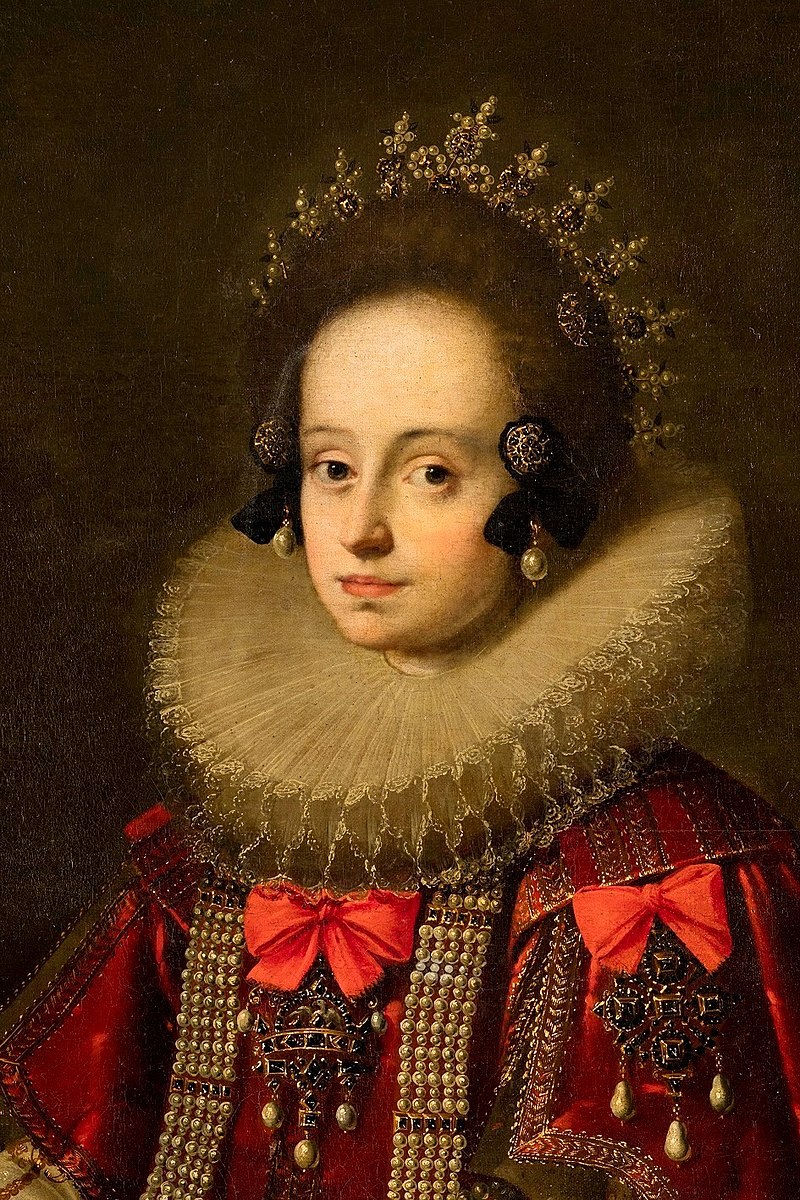
Constance of Austria, Sigismund’s second wife and the younger sister of his first wife; Credit – Wikipedia
On December 11, 1605, Sigismund married Anna’s sister Constance of Austria (1588 – 1631) who became Queen of Poland and Grand Duchess of Lithuania upon her marriage.
Sigismund and Constance had seven children:
- Johan Kasimir (1607 – 1608), died in infancy
- Johan Kasimir II, King of Poland, Duke of Lithuania (1609 – 1672), married (1) Marie Louise Gonzaga, had two children (2) Claudine Françoise Mignot (morganatic marriage), had one daughter
- Cardinal Johan Albert Vasa, Bishop of Krakow (1612 – 1634), died from smallpox
- Karl Ferdinand Vasa, Bishop of Wrocław (1613 – 1655)
- Alexander Karl Vasa (1614 – 1634), died from smallpox
- Anna Konstantia Vasa (born and died 1616), died in infancy
- Anna Katarina Constance Vasa (1619 – 1651), married Philip Wilhelm, Hereditary Count Palatine of Neuburg, no children
In June 1631, on a very hot day, Constance participated in the procession on the religious Feast of Corpus Christi and suffered a severe heatstroke. She died on July 10, 1631, aged 42, from the effects of the heatstroke. Sigismund was so upset that he could not attend her funeral. He never recovered from Constance’s sudden death and died just nine months later, on April 30, 1632, aged 65. Sigismund and Constance were both buried in the crypt under the Vasa Chapel at Wawel Cathedral in Kraków, Poland.

Sigismund III on his catafalque following his death; Credit – Wikipedia
This article is the intellectual property of Unofficial Royalty and is NOT TO BE COPIED, EDITED, OR POSTED IN ANY FORM ON ANOTHER WEBSITE under any circumstances. It is permissible to use a link that directs to Unofficial Royalty.
Kingdom of Sweden Resources at Unofficial Royalty
- Kingdom of Sweden Index
- Swedish Orders and Honours
- Swedish Royal Dates
- Swedish Royal Burial Sites
- Swedish Royal Christenings
- Swedish Royal FAQs
- Swedish Royal Residences
- Swedish Royal Weddings
- Line of Succession to the Throne of Sweden
- Profiles of the Swedish Royal Family
Works Cited
- En.wikipedia.org. 2021. Sigismund III Vasa – Wikipedia. [online] Available at: <https://en.wikipedia.org/wiki/Sigismund_III_Vasa> [Accessed 4 June 2021].
- Flantzer, Susan. Johan III, King of Sweden. [online] Available at: <https://www.unofficialroyalty.com/johan-iii-king-of-sweden/> [Accessed 4 June 2021].
- Pl.wikipedia.org. 2021. Zygmunt III Waza – Wikipedia, wolna encyklopedia. [online] Available at: <https://pl.wikipedia.org/wiki/Zygmunt_III_Waza> [Accessed 4 June 2021].
- Sv.wikipedia.org. 2021. Sigismund – Wikipedia. [online] Available at: <https://sv.wikipedia.org/wiki/Sigismund> [Accessed 4 June 2021].


